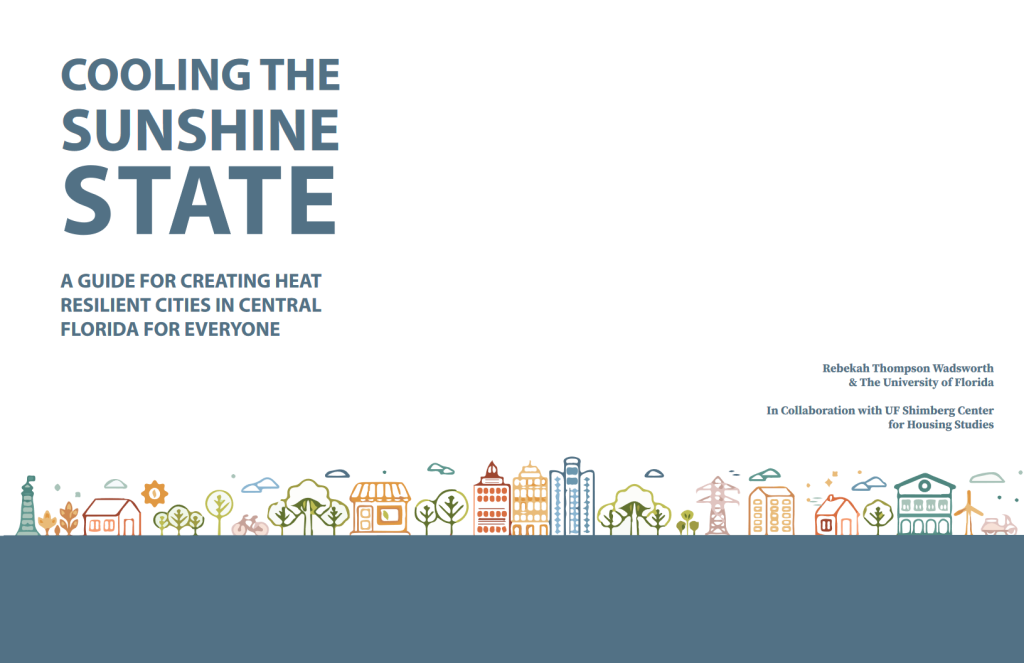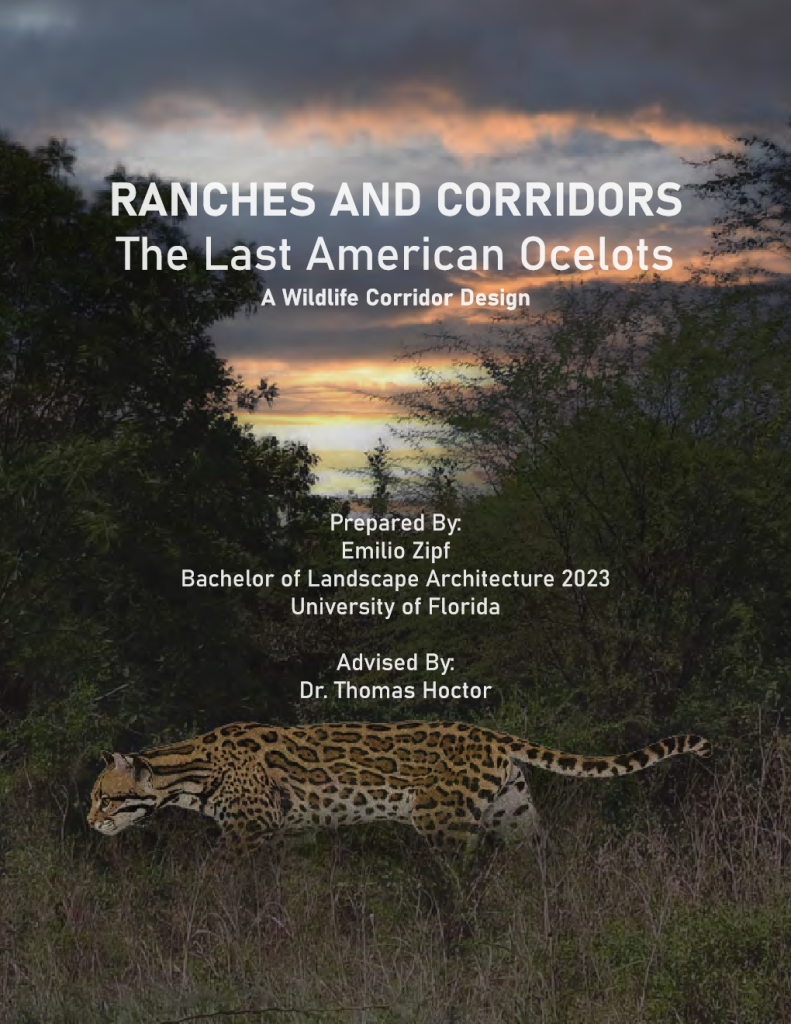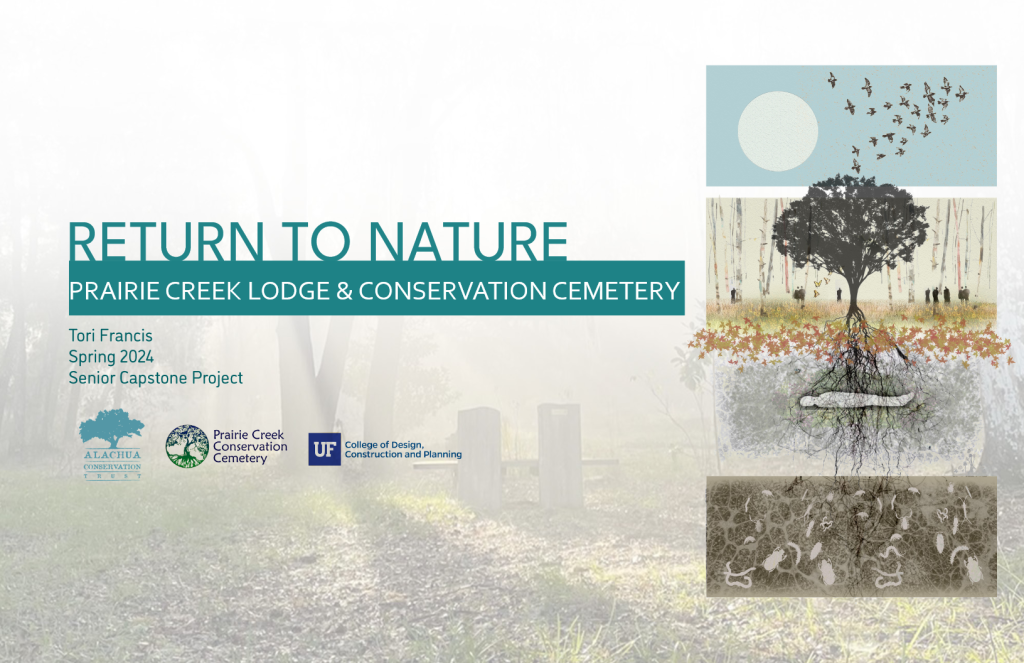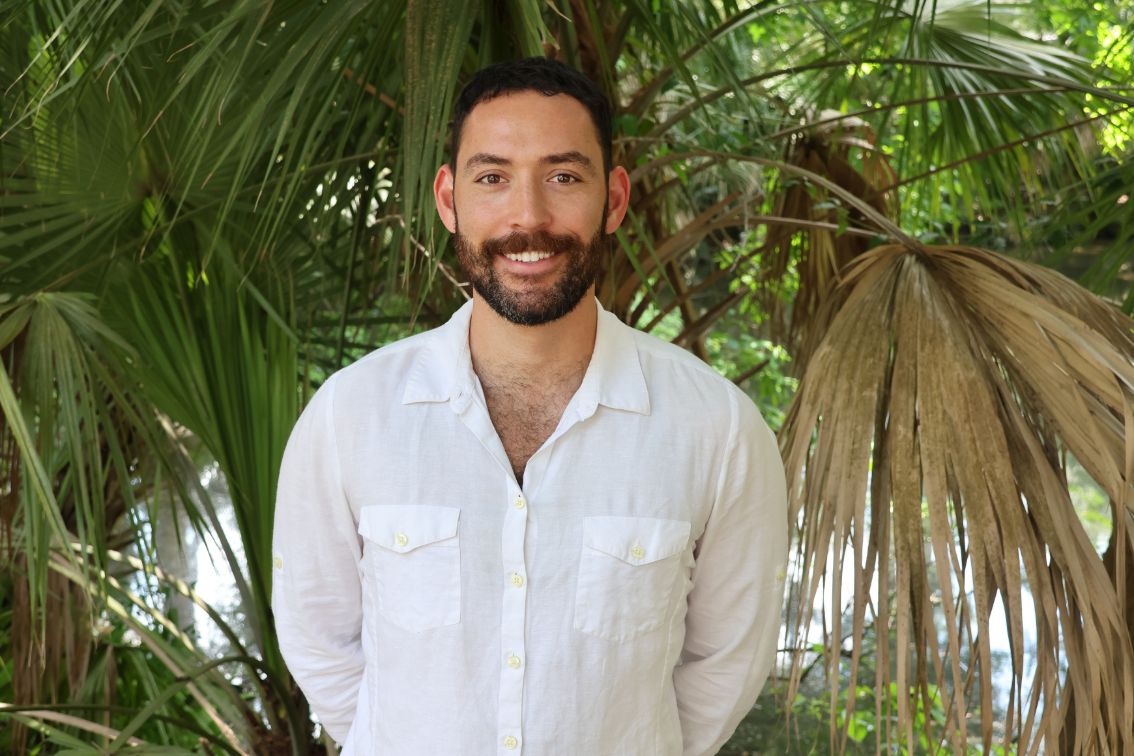The UF Landscape Architecture Program (LAD) is proud to have a series of incredible student-led research projects focused on a wide array of topics, from creating resiliency plans for Florida cities in the face of rising sea levels to proposals to preserve Florida’s unique wildlife habitats.
On this page, you will find a collection of highlighted projects and theses from both undergraduate and gradate students within the Landscape Architecture Program. We hope that these highlighted projects will give you a glimpse at the commitment and dedication LAD students have to making the world a better place.
Undergraduate
Research Projects
Master Thesis &
Terminal Projects
Undergraduate Research Projects
This section contains various highlighted research and capstone projects by undergraduate Landscape Architecture students.
Gunnar Gierschke
Design To Divide: The Relationship Between Urban Segregation and Urban Form
Urban segregation refers to the spatial separation of different groups of people within a city based on ethnicity, race, and other socioeconomic factors. Urban form encompasses the physical design and spatial organization of a city that defines an urban environment. Urban segregation in the United States has often arisen from racially unjust historical policies passed at the local, state, and federal levels. Many of these have had repercussions on the urban form of cities and which continue to perpetuate urban segregation long after legal segregation was outlawed.
Megan Laffey
“As coastal development threatens natural habitats, an unlikely ally for endangered seabirds has emerged: gravel rooftops. University of Florida landscape architecture student Megan Laffey dedicated her summer to exploring this connection through an internship with the Florida Fish and Wildlife Commission (FWC) and American Bird Conservancy (ABC). Laffey’s research focused on three threatened species: Least Terns, Black Skimmers, and Roseate Terns. These seabirds, pushed from their traditional coastal nesting grounds, have increasingly turned to gravel roofs as alternative breeding sites since the mid-1900s.”
Rebekah Thompson Wadsworth
Cooling the Sunshine State: A Guide for Heat Resilient Cities in Central Florida for Everyone
With average global temperatures rising each year, cities are becoming hotter, with increased heat waves and extreme heat conditions. With the increase of global temperature, there is also an increase in heat related health risks like heat stroke, heat exhaustion or dehydration. These heat related health risks are not equally distributed throughout cities, and people who live in low income areas or affordable housing situations, which often includes elderly and historically marginalized communities, are more at risk of heat related health risks. This project aims to analyze the risks of heat related health issues at a regional scale in Central Florida and to develop strategies for combating heat hazard for this at risk population, focusing on elements achievable by homeowners, designers, and policymakers.
Emilio Zipf
Ranches and Corridors:
The Last American Ocelots
Ocelots are striking, spotted, small cats associated with the jungles of South America. They once ranged across the southern United States, however, today two, isolated subpopulations remain in south Texas. These two populations, numbering about 80 individuals combined, will inbreed to extinction unless they can be connected by a wildlife corridor. This project identified existing suitable and potentially restorable habitat in the region. Then, with connectivity modeling and land use data, a practical corridor between habitats was actualized.
Abby Boe
Beyond The Storm:
A Resilient Future for Cedar Key, FL
Beyond the Storm: A Resilient Future for Cedar Key, FL exhibits a comprehensive masterplan aimed at fortifying the resilience and enhancing the overall experience of the Mid Cedar Key subdistrict within the City of Cedar Key. Through strategic measures, the plan safeguards vulnerable areas while fostering community identity and cohesion. Key infrastructure upgrades, such as archipelago restoration and flood mitigation, ensure the city’s sustainability and safety amidst environmental challenges.
Victoria Anne Francis
Return To Nature:
Prairie Creek Lodge & Conservation Cemetery
The goal of this project is to create an expansion of the cemetery with spaces for the public to gather and reflect as well as provide native habitat in the form to enhance the existing ecological, educational, and conservation value of the property.
Megan Laffey
One Trail at a Time: Increasing Conservation Lands Through Colocation of Wildlife Corridors and Nature-Based Recreation
This project explores how we can promote the conservation of places where wildlife and humans can coexist in a world of inevitable development.
Master Thesis and Terminal Projects
This section contains highlighted theses and terminal projects submitted by Master’s Landscape Architecture students.
Isabella Guttuso Browne
A Future Florida Spring Experience:
Considering how landscape architects can enhance recreation and ecosystem health at Florida’s springs
Maegan Mikkelson
Sea Change: Rising Sea Levels and Evolving Ecology
Adaptation Concepts for Sanibel Island, Florida
Bryce Donner
Generating Green Infrastructure Strategies for the Coastal City of Lewes, Delaware
Contact Us

Jules Bruck
Director, School of Landscape Architecture and Planning
Chair and Professor, Department of Landscape Architecturejbruck@ufl.edu










